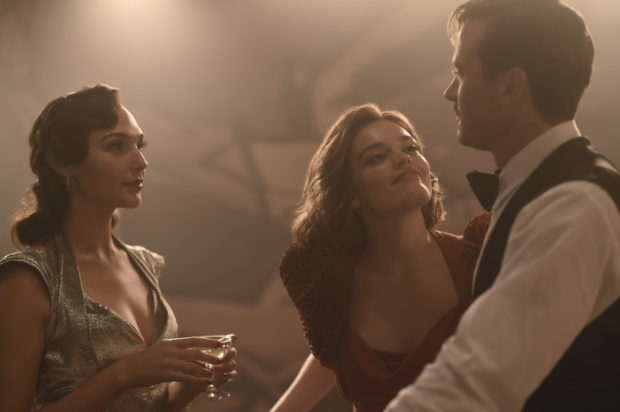Twentieth Century Studios’ “Death on the Nile”: Maggie’s Review

In theaters now is “Death on the Nile,” a mystery thriller based on Agatha Christie’s 1937 novel of the same name. Following the box office success of 2017’s “Murder on the Orient Express,” Kenneth Branagh returns as director and star of next installment of Hercule Poirot’s adventures. Though it isn’t breaking any molds, “Death on the Nile” is a decently gripping mystery with a packed cast, great costumes and a comfortably predictable mystery.

“Death on the Nile” opens on a young Poirot (Kenneth Branagh) in the trenches of World War I using his power of observations to coordinate an ambush. After an injury on the battlefield, Poirot is reunited with his love who suggests he grow a mustache to conceal his battle wounds. Twenty years later, he visits a jazz club where he witnesses the beginning of a love triangle between Simon (Armie Hammer), Jackie (Emma Mackey) and Linnet (Gal Gadot). On a vacation to Egypt, he finds himself folded into the wedding party of Linnet and Simon as they attempt to evade the spurned Louise and manage the ill intentions of the friends and family on board the river cruise. Other members of the cast include Annette Benning, Russell Brand, and Letitia Wright.

“Death on the Nile” takes a rather long first act to find its feet, but once it does the film is highly enjoyable. Even though the mystery’s final resolution is pretty predictable (partially because Christie’s novels created so many of the mystery tropes we have come to expect), there are sufficient twists, turns and soapy interpersonal dramas to keep the film engaging. “Death on the Nile” finds a good balance of mystery (clues and interviews) with thrills (one particularly startling jump-scare made my companion spill their popcorn). This film feels like a rare follow up that overshadows its predecessor.

Given its time period and setting, “Death on the Nile” has some expected, but still disappointing race issues. The cruise down the Nile and the whole honeymoon is an exercise in glamorizing colonialism. The film makes a clumsy attempt at addressing the tension between the wedding party, and Salome and Rosalie Otterbourne, but don’t go so far as to actually name the racism at play. In committing to the period, “Death on the Nile” throws restraint out the window when it comes to the costumes, music and sets. Some liberties are taken, particularly with the musical styling of Salome Otterbourne, but the film’s devotion to the era pays off.
If still about 30 minutes too long and unprepared to bring any modern lens to its source material, “Death on the Nile” is still a gripping mystery with soapy love affairs, familial scheming and a wonderfully terrible Beligan accent. “Death on the Nile” is in theaters now, with streaming date and platform to be announced.


